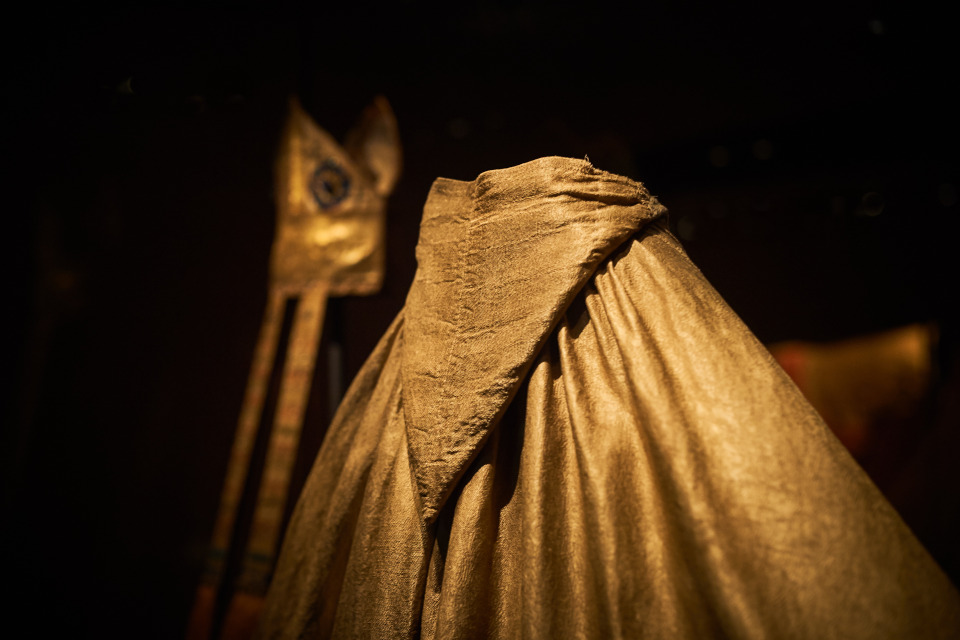Textiles
Different cloths and clothing change the appearance of places and people. Textiles are a fundamental element of design. They were just as significant, if not more so, in the Middle Ages. As the fabrics’ organic components and fine fibres are prone to severe deterioration, few have survived the centuries.
Counting some 300 items, the collection of textiles in the cathedral treasures is an unusual, almost unique window to the past. It is complemented by a host of precious silk fabrics used to cover relics and dating back to the early Middle Ages. Most are mediaeval, from the 11th to the early 16th centuries; a small number were created later. Together, all these pieces were used to richly furnish the cathedral and decorate it for celebrations and feast days. On one hand, tapestries, cloths and banners added to the cathedral’s grandeur, and decorated cloaks adorned sculptures on special occasions. On the other hand, cloths and hangings embellished the altars during Mass.
The size and significance of the tapestry collection are unparalleled. The Abraham and the Angels tapestry and the Christ and the Apostles tapestry, both from the mid-12th century, are believed to be the oldest of their kind in the world. These oldest works of embroidery to come from the Byzantine Empire have thus been suitably preserved in the cathedral treasures as rare examples of early mediaeval visual art.
The many spiritual vestments show how the bishops and priests dressed, how they displayed their position, and how they held mass as Vicars of Christ. Whole sets of bishops’ robes and vestments have survived, along with rare accessories, hose, shoes, gloves and even a pointed cap. These pieces do not only offer rare insights into a little-known art; the sheer number of them also makes it possible to observe changes in the look and richness of the textiles’ design over the centuries.

